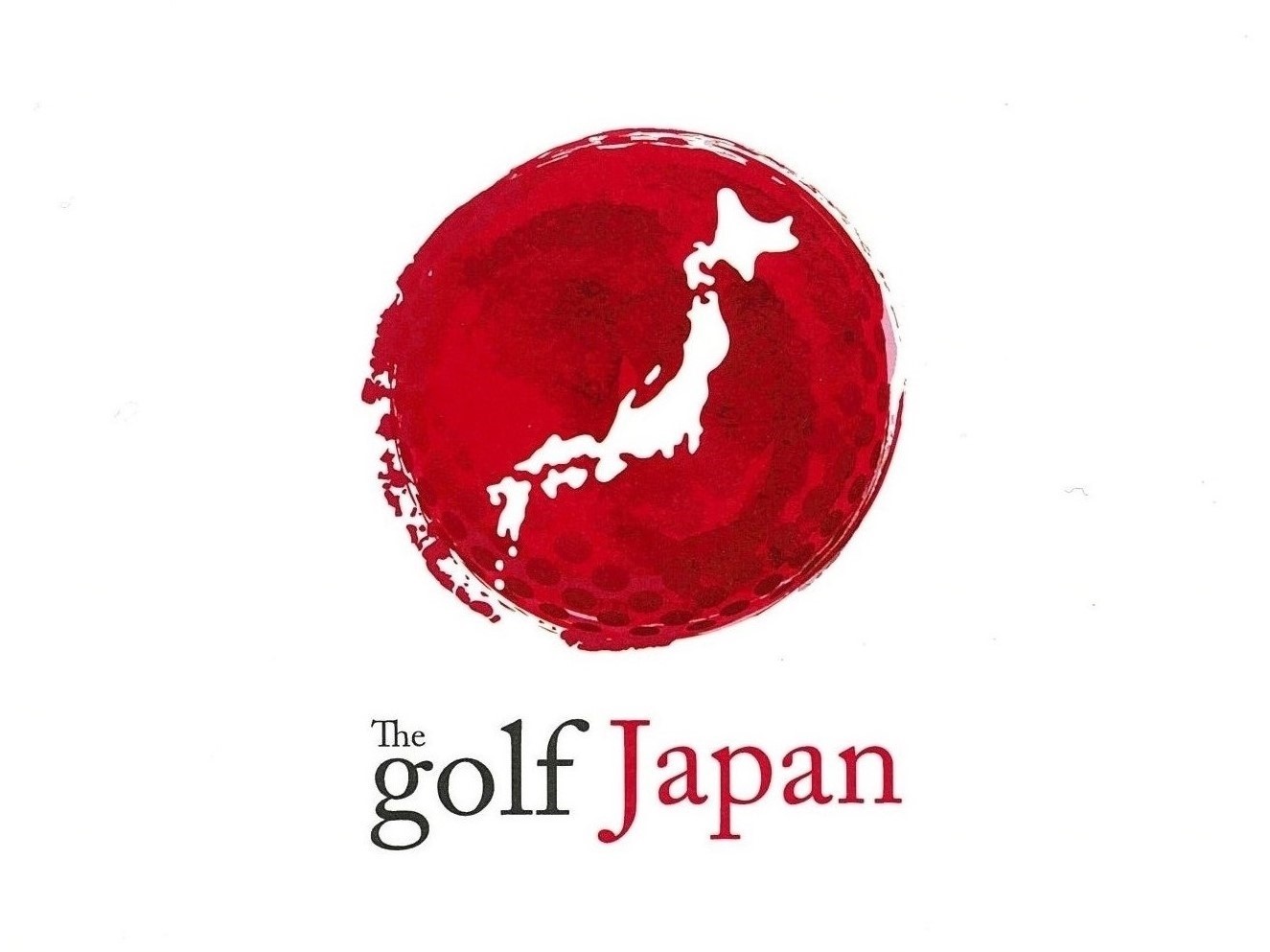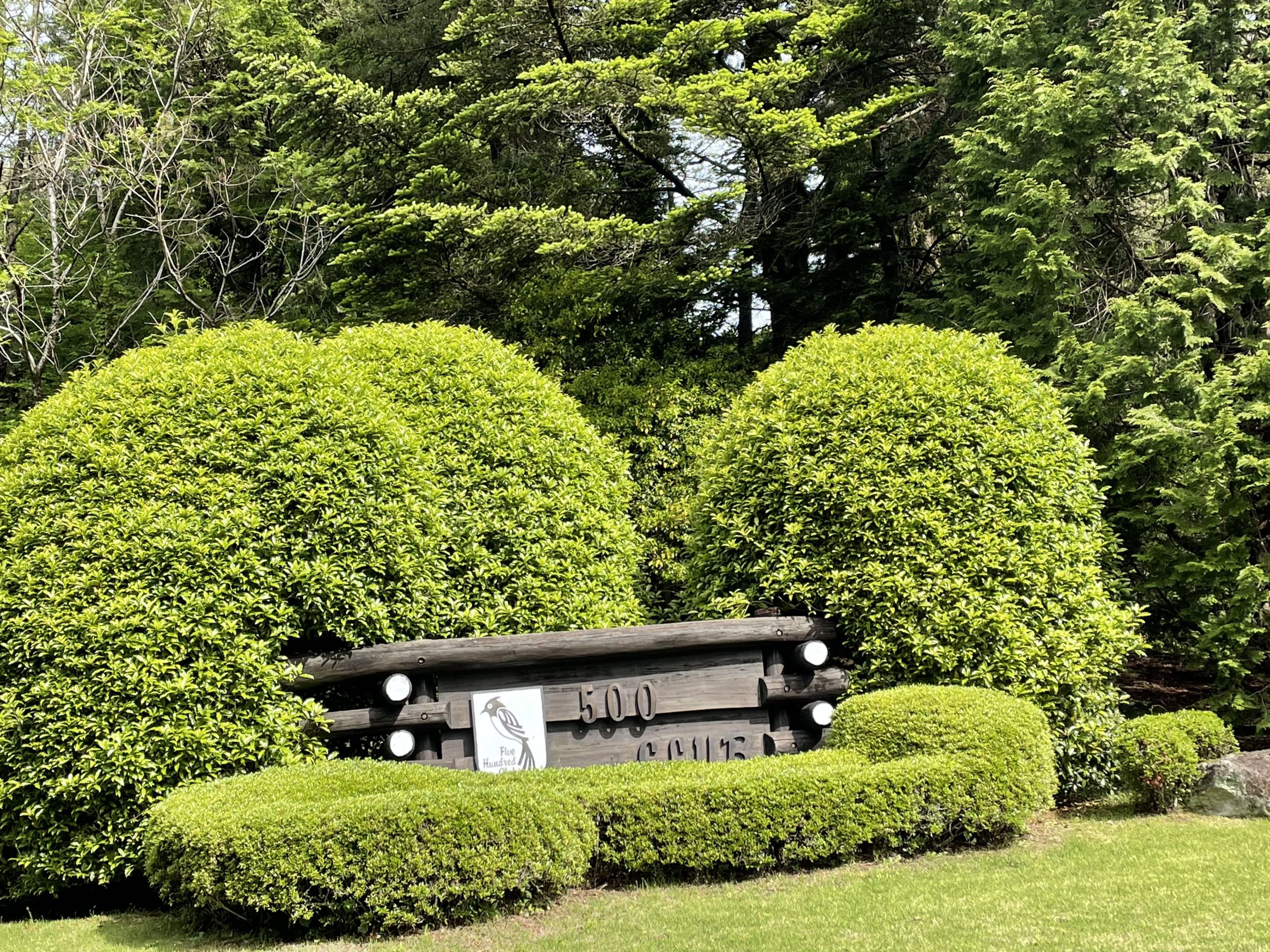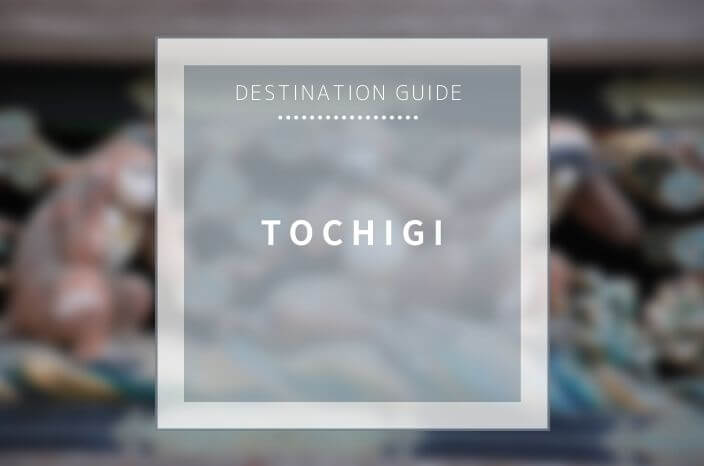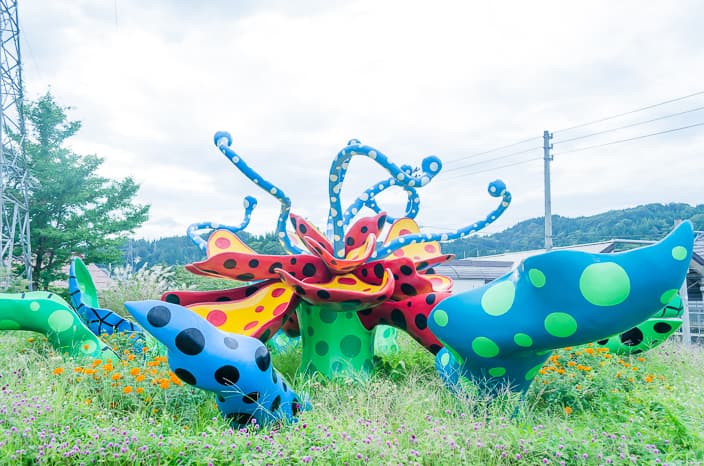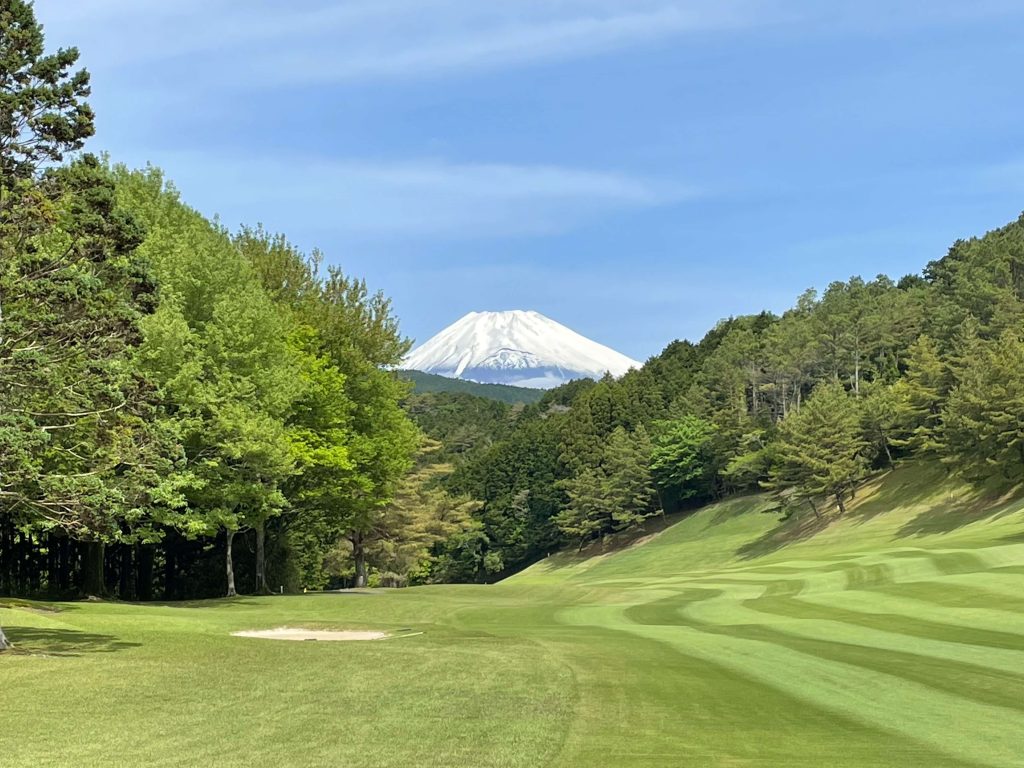
Tokyu Corporation is a major private railway company with 8 routes and a total length of about 105km, starting from terminal stations in western Tokyo such as Shibuya and Meguro and connecting eastern Kanagawa prefectures such as Yokohama.
In addition to the transportation business such as railways, they are engaged in real estate business such as urban development and housing development, retail business, hotel and resort business, etc. The number of passengers on railways, consolidated sales and profitability are among the top in the major Japanese railway industry. This time, we would like to introduce the golf course operated by the Tokyu Corporation Group.
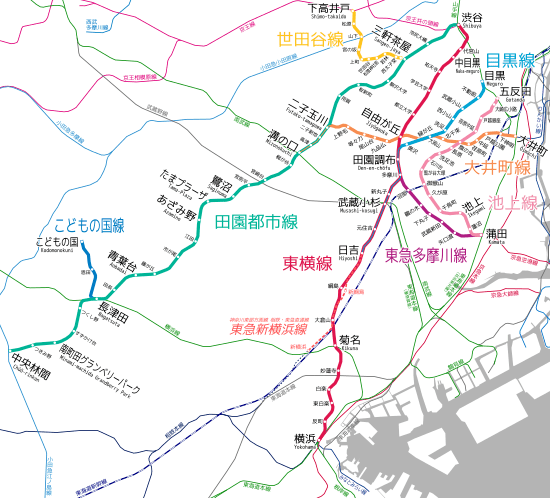
The company originates from “Denen-Toshi Co., Ltd.(Garden City Co,.)”, which was founded by Eiichi Shibusawa, the creator of modern Japanese capitalism. This year marks the 100th anniversary of the founding of Meguro-Kamata Electric Railway, which is the railway division, since it was spun off in 1922. In 1927, the sister company “Tokyo-Yokohama Electric Railway” connected Shibuya and Yokohama, which are still the center of the company’s network, and housing development such as Denenchofu progressed along the line. After that, when Keita Goto, who has the power, became the president, the company name was changed to “Tokyu Corporation” to expand the business. He merged and acquired more than 30 private railway companies such as Odakyu Electric Railway, Keio Electric Railway, Tamagawa Electric Railway, Keihin Kyuko, and Sagami Railway in the surrounding area against the background of wartime control. The length of the line is 320km, and it is an era called “Giant Tokyu”.
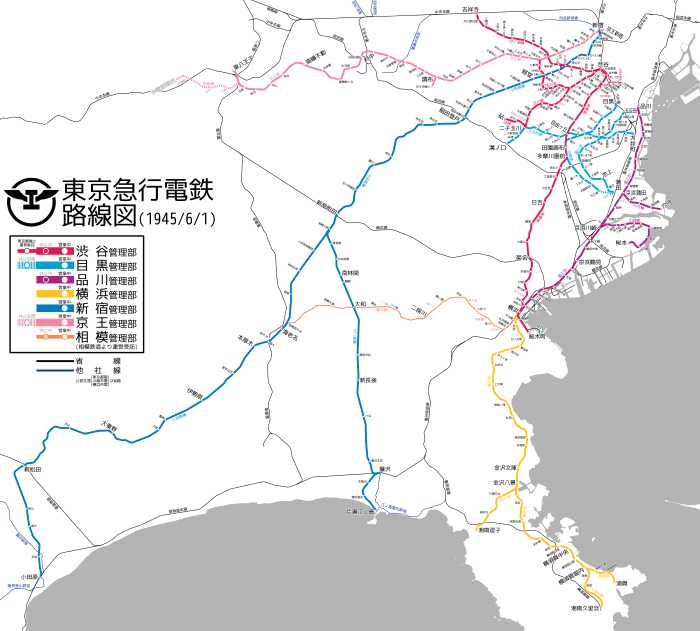
However, after the end of the war, the situation changed completely, and due to the enforcement of the “Elimination of Excession of Economic Power” and the increase in the cost burden for reconstruction from the war, Giant-Tokyu was forced to reduce its business scale by separating each company. After that, in response to the post-war population expansion, they re-promoted the garden city concept, which is also the company’s identity. The former Tamagawa Electric Railway, which was a tram connecting Shibuya and Futakotamagawa, which has a history of opening in 1907, would be completely renovated and underground to connect to the subway (Tokyo Metro Hanzomon Line).
Then, in 1984, 30 years after the concept was created, the Denen-toshi Line, which runs through the Tama Hills, was fully operated as a new trunk line. They promoted large-scale development of the area around the line and succeeded in creating an attractive and high-quality city, making it one of the most popular lines in Japan. By the way, Tokyu’s motto is “The route you want to live in Japan, that is along the Tokyu line”.
Now most of the Tokyu lines are connected to the subway (Tokyo Metro), making it possible to directly enter the center of Tokyo. Furthermore, by connecting to Tobu Railway and Seibu Railway beyond that, it has become a huge railway network that extends to the northeastern part of Tokyo and Saitama Prefecture.
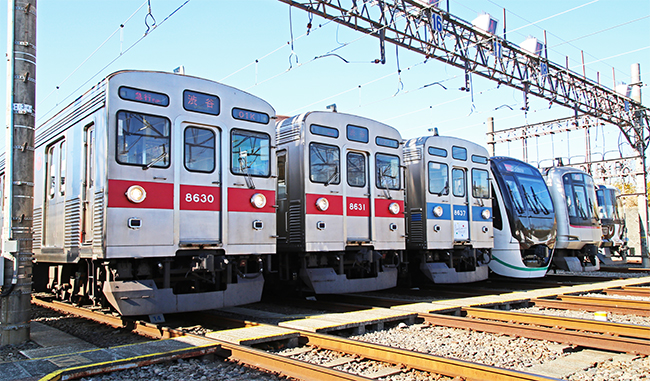
At the end of this year, which marks the 100th anniversary of its founding, the Sagami Railway, which once made up Giant-Tokyu, and the Tokyu Toyoko Line will be connected, and the “Tokyu Shin-Yokohama Line” will open. The formation of a new wide-area railway network that connects the southwestern part of Kanagawa Prefecture with central Tokyo and Saitama Prefecture is expected to improve convenience and revitalization along the railway lines.
Furthermore, by connecting to the Tokyu Line near Kamata Station on the Keihin Kyuko Line, which was also a company during the Giant-Tokyu era, the “Tokyu New Airport Line” (commonly known as Kama-Kama Line) will be a new access line to Haneda Airport, which continues to expand. It was also announced that plans to build “Line)” would move forward.
Last month, Tokyo and the hometown of the airport agreed on the ratio of construction costs to the local government, and in the future, they will establish a public-private organization with Tokyu Corporation and aim to open in the 2030s.
If this is realized, it is expected that a new railway network will be created that connects Haneda Airport with various parts of the Tokyo metropolitan area such as the Tokyo Metro and Tobu / Seibu lines via the Tokyu line, which will lead to the strengthening of Tokyo’s international competitiveness. Tokyu’s 100th anniversary slogan is “To people, to the city, to the future.”
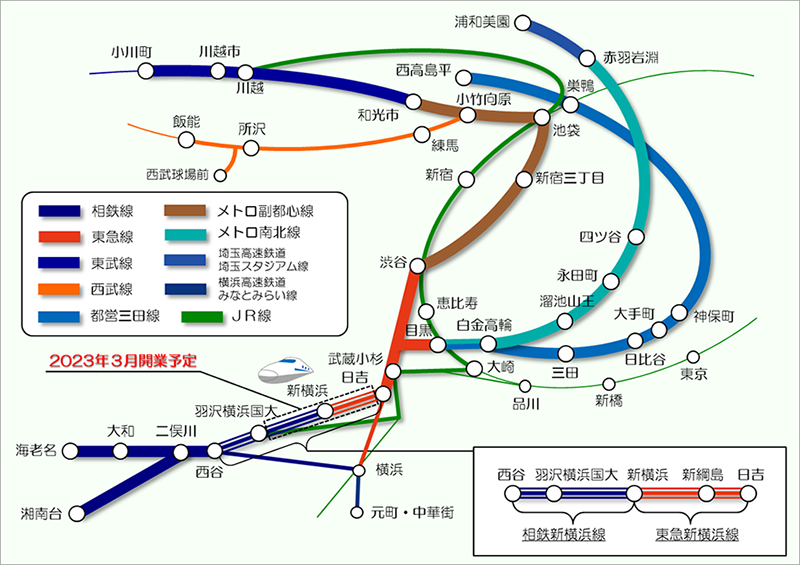
By the way, Tokyu is developing many businesses other than railways, but the leisure-related department also operates many golf courses in various parts of Japan. The highest course among them is the “Three Hundred Club (opened in 1962)” in Chigasaki City, Kanagawa Prefecture, which was introduced earlier in this blog. It is said to be the most exclusive club in Japan where celebrities in the political and business world, including the late Prime Minister Shinzo Abe, who died unexpectedly the other day, was created by Noboru Goto, the son of Keita Goto and the top of the Tokyu Group at that time.

The “Five Hundred Club” introduced this time has the second highest quality to the “Three Hundred Club” in the Tokyu Group. This hill course is located at the foot of Mt. Ashitaka in Susono City, Shizuoka Prefecture, looking up at Mt. Fuji, and you can see Mt. Fuji, Suruga Bay, Mt. Hakone, and the beautiful mountains of the Izu Peninsula.
It opened in 1980 and has a history of more than 40 years, and the course design was already highly evaluated by Mr. Chohei Miyazawa. Since then, he has designed many Tokyu group golf courses such as the sister course “Seven Hundred Club (1989)”. Noboru Goto, the president of Tokyu Corporation at the time, decided to build a new golf course in this area, but it is said that the intention of Mr. Goto, who was also a famous golf player, was reflected in the construction.
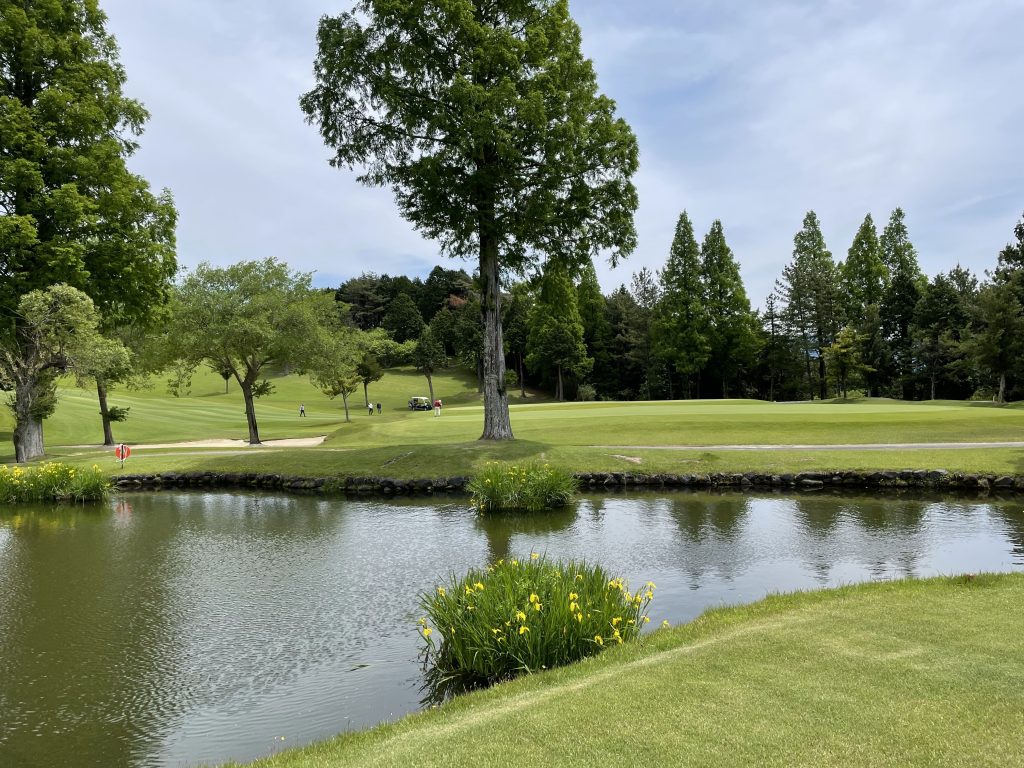
Mr. Miyazawa’s basic concept in designing was “enjoyable from beginners to advanced players according to their abilities”, “being a champion course that can be played by professionals”, and “combining dignity and beauty as a course”.
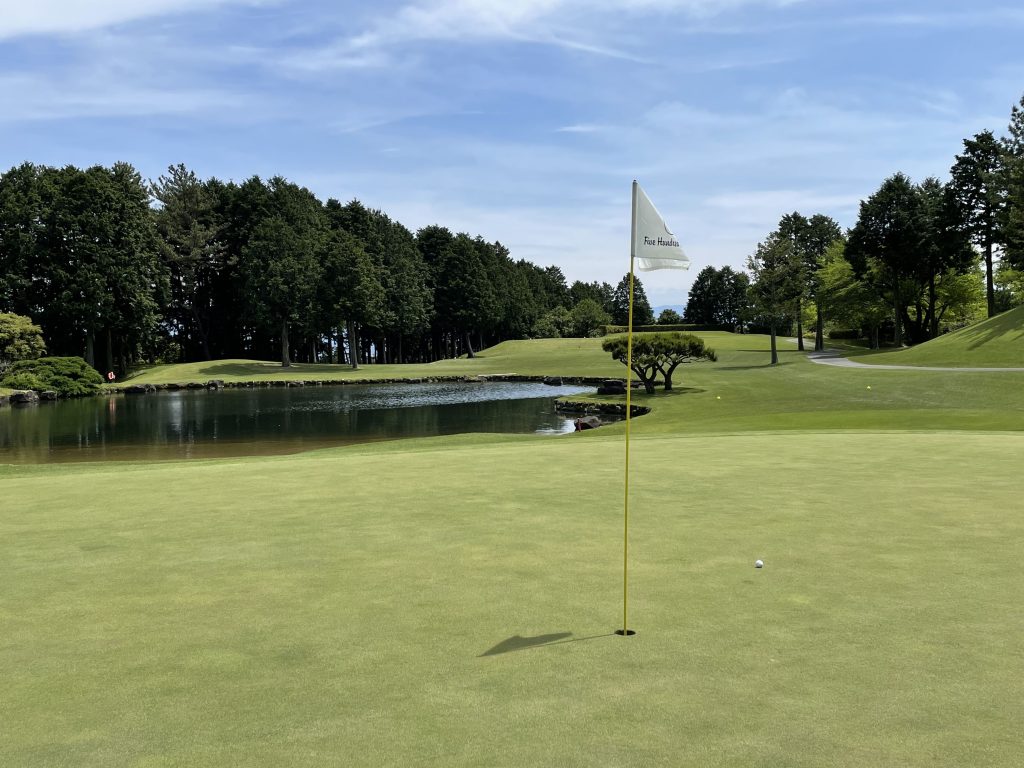
According to one of the concept, it is a champion course where professional games can be played, so it became the venue for the famous women’s professional golf tournament “Fujisankei Ladies Classic” for 14 times from 1982 to 1995 when it first opened. Since 1996, the venue has been moved to “Fuji-zakura” and now it is held at “Kawana Hotel Golf Course”, but in 1992, the famous Ayako Okamoto won the championship in this course.
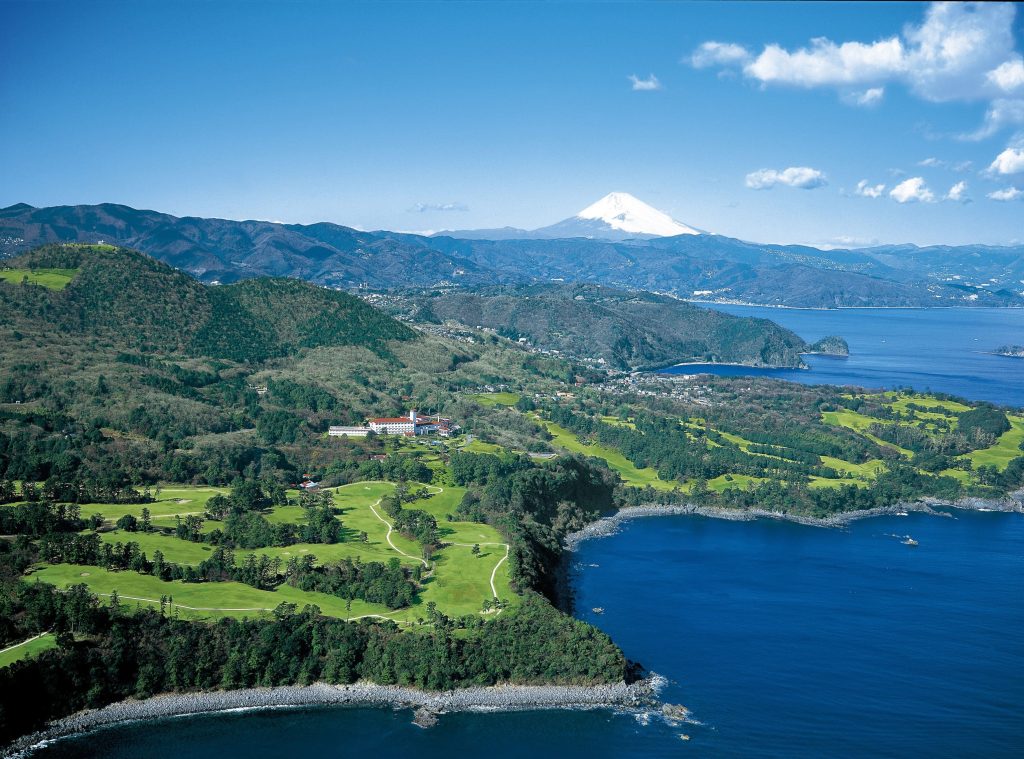
When you actually make a round, you can feel that the course is designed with the player who has a wide variety of abilities, from beginners to advanced players, as well as professionals, to enjoy. Since it is located at the foot of Mt. Fuji, there is an elevation difference of about 150m on the site, but due to the skillful layout, many holes are gently downhill. Also, even in climbing holes, there are no steep uphill holes, so you would not feel the height difference in pain.
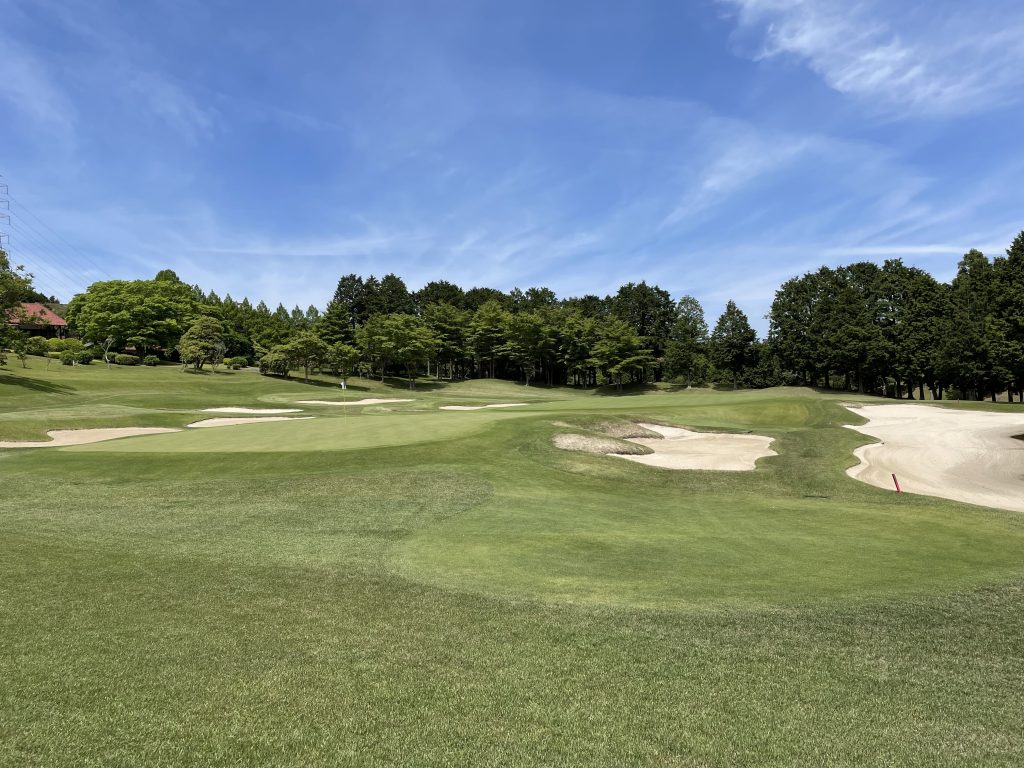
On the other hand, the total length of the course is 7,068 yards (par 72), and each hole has plenty of distance. Spacious holes where you can hit tee shots without stress and holes where accurate shots are required are arranged well alternately. In addition, undulations that take advantage of the natural terrain, hazards such as ponds and bunkers, and the well-arranged many trees enhance the strategic nature of the course. In addition, all the holes have symbol colors and symbolic plants such as cherry blossoms, autumn leaves, and cycads, so you can enjoy the changes of the four seasons and play without getting tired. When it first opened, it was Bent and Korai (Goryeo) 2 greens, but now it has been remodeled to Bent 2 greens.
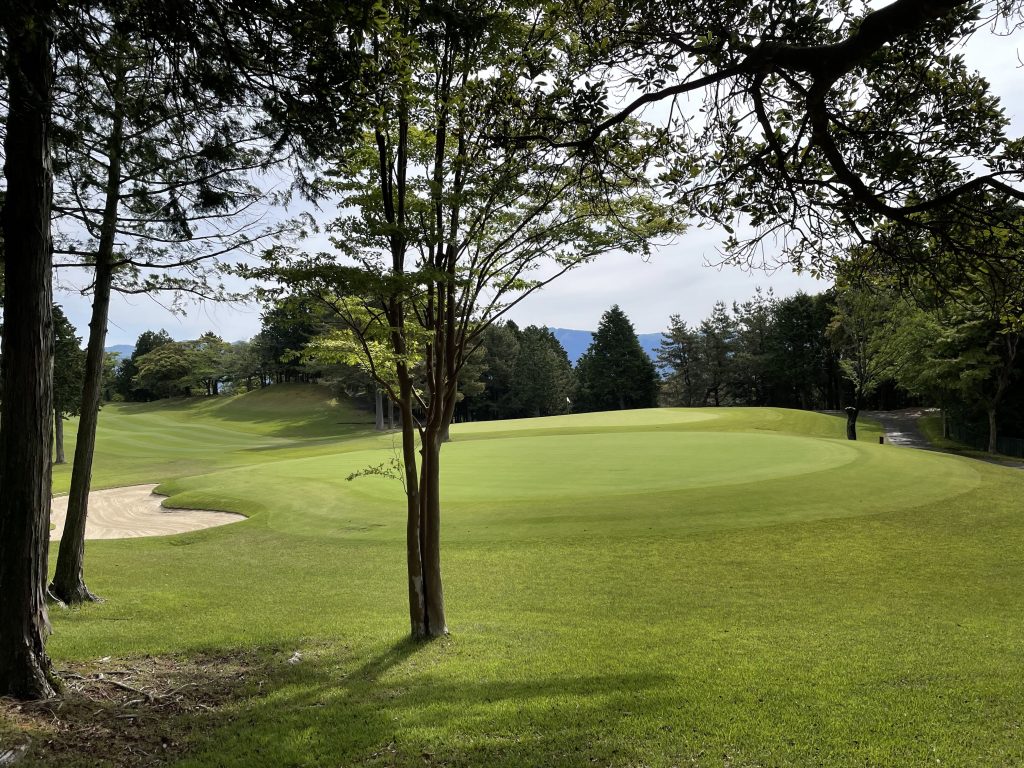
The Out course is located in a low area with the clubhouse as the boundary, and there are dock wreck and pond crossing, but the fairway is relatively flat and you can enjoy the view of Suruga Bay and Izu Peninsula in the distance. The 9th hole is a famous short hole, over a pond with an impressive white sand beach bunker in front of clubhouse and Mt. Fuji. Probably because of the designer’s idea that the start hole, and the final hole, the short hole are the ones that leave a strong impression on the player.
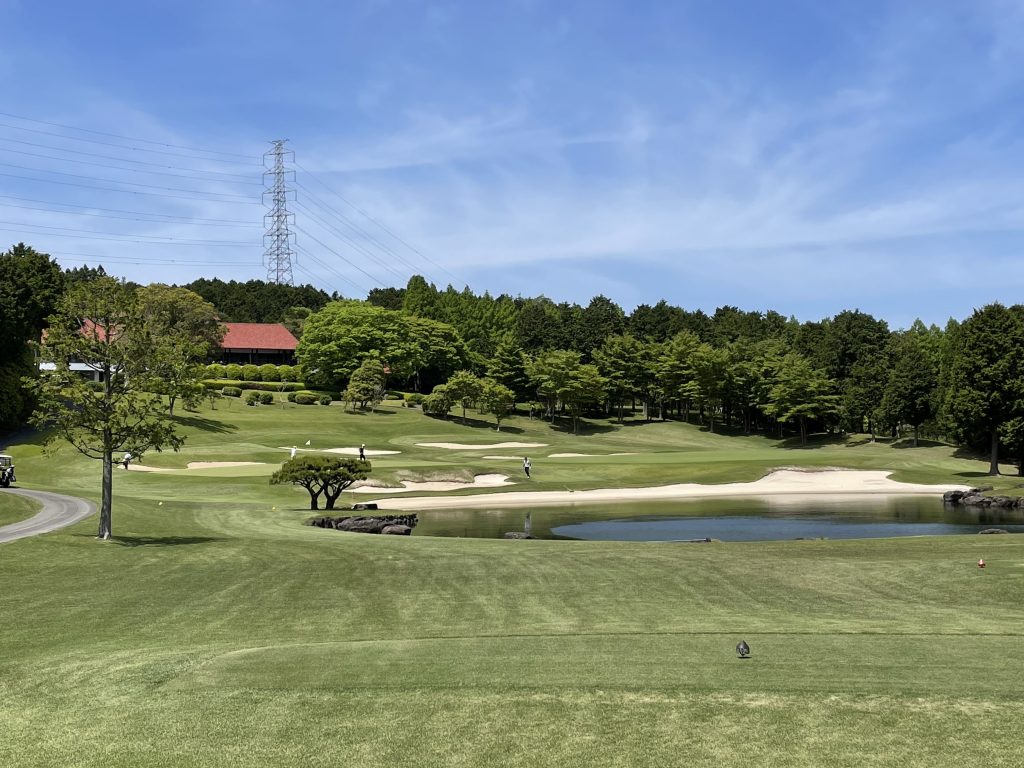
On the other hand, the In-course is located higher than the clubhouse, and there are many highly strategic holes that take advantage of the varied natural terrain and holes that overlook Mt. Fuji. The 18th hole is a symbolic final hole with 500 characters three-dimensionally emerging by planting beautiful azaleas on the slope next to the green.
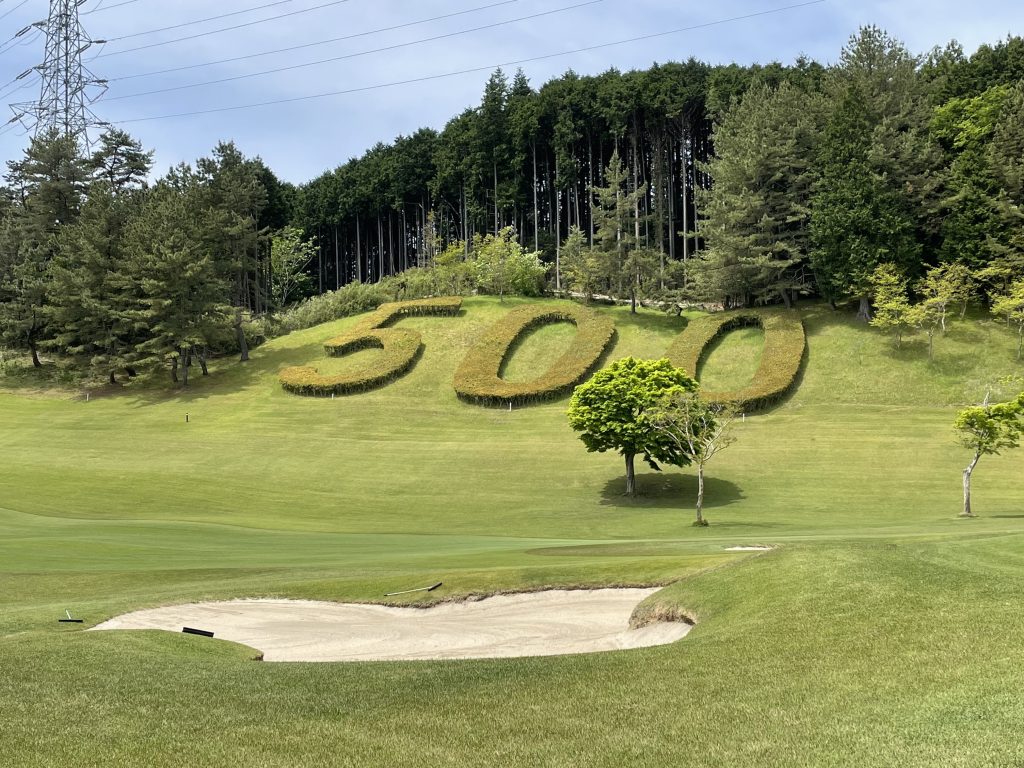
Let’s take a look at each hole.
The first hole (548 yards, par 5) is a magnificent long hole on the right side of the clubhouse.
With a gentle downhill right dock wreck, the spacious fairway eliminates the tension of the start hole. There is a pond in front of the left side of the green, so you need to be careful, but the waterside is decorated with seasonal flowers such as irises.
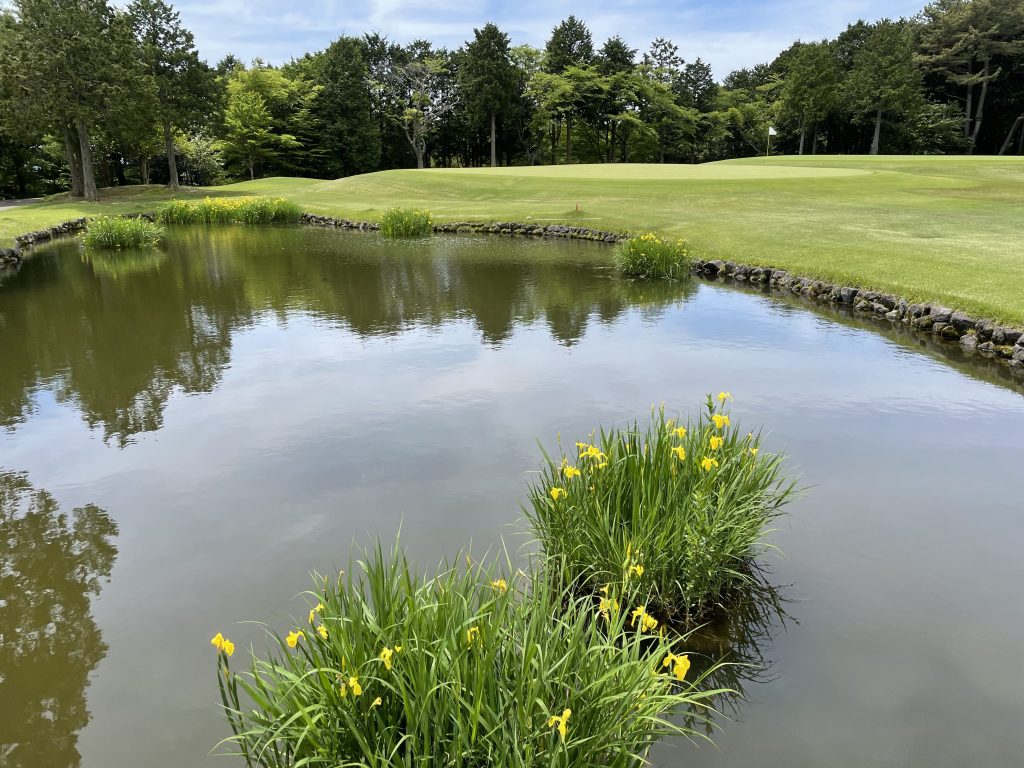
The second hole (382 yards, par 4) is a downhill middle hole with a large dock wreck to the left. Players who are confident in the flight distance will want to aim for a shortcut, but there is a risk of making a mistake if the tee shot is just started and the force is applied. Especially for draw hitters, don’t overdo it and aim at the target tree on the opposite bank.
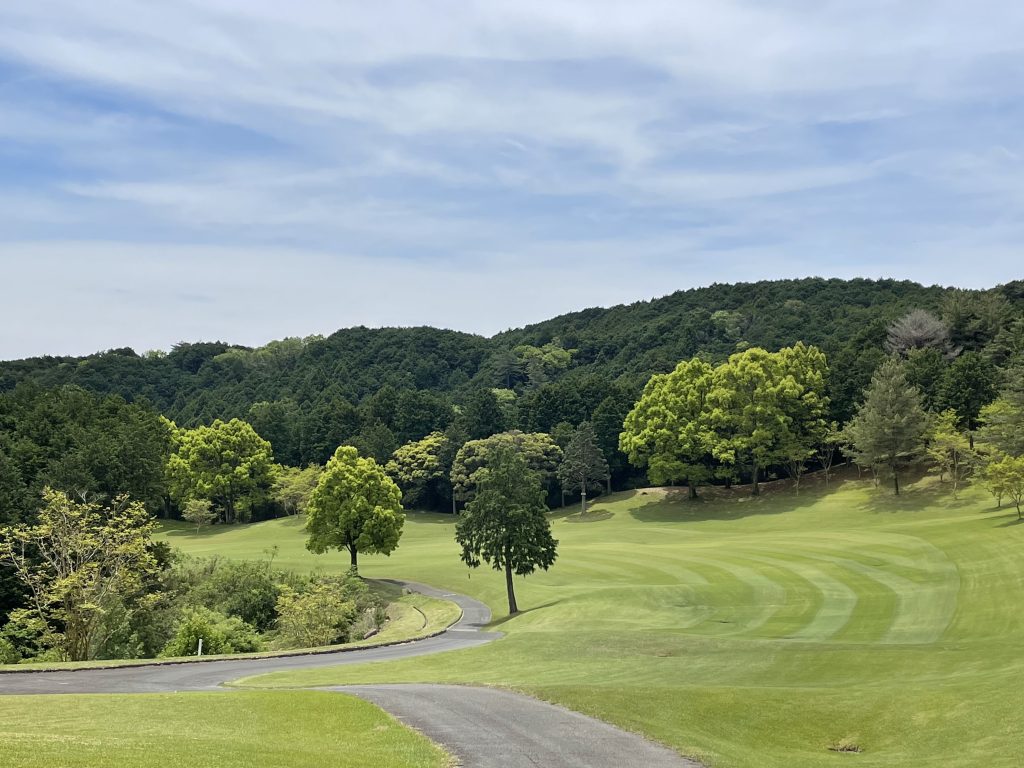
The 3rd hole (340 yards, par 4) is the middle hole of the left dock wreck where you can see Mt. Fuji for the first time after the start. The tee shot is downhill, but be careful as there is a valley on your right, the fairway is wide but slowly climbing so it is farther than it looks and you need to choose a larger club.
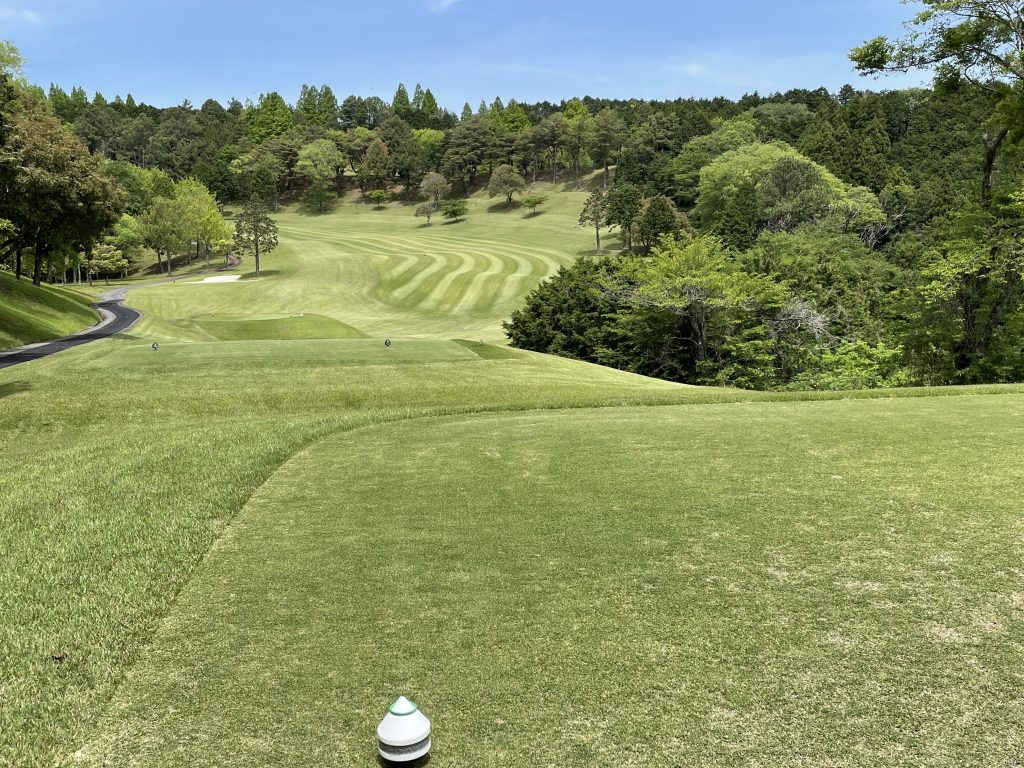
No. 4 (156 yards, par 3) is a beautiful short hole with a tropical atmosphere because many palms and cycads are planted on the fairway. With a gentle downhill and a wide fairway, you can aim for the pin with all one’s might, but be careful not to hit it into the planting around the green.

The 5th (509 yards, par 5) is a long hole that climbs slowly, and there is a big cherry tree on the right side of the fairway, which is a very beautiful and impressive hole in spring. Gate-like pine trees stand on the left and right sides of the fairway in front of the green, and the bunker beyond that is deep, so be careful when approaching.
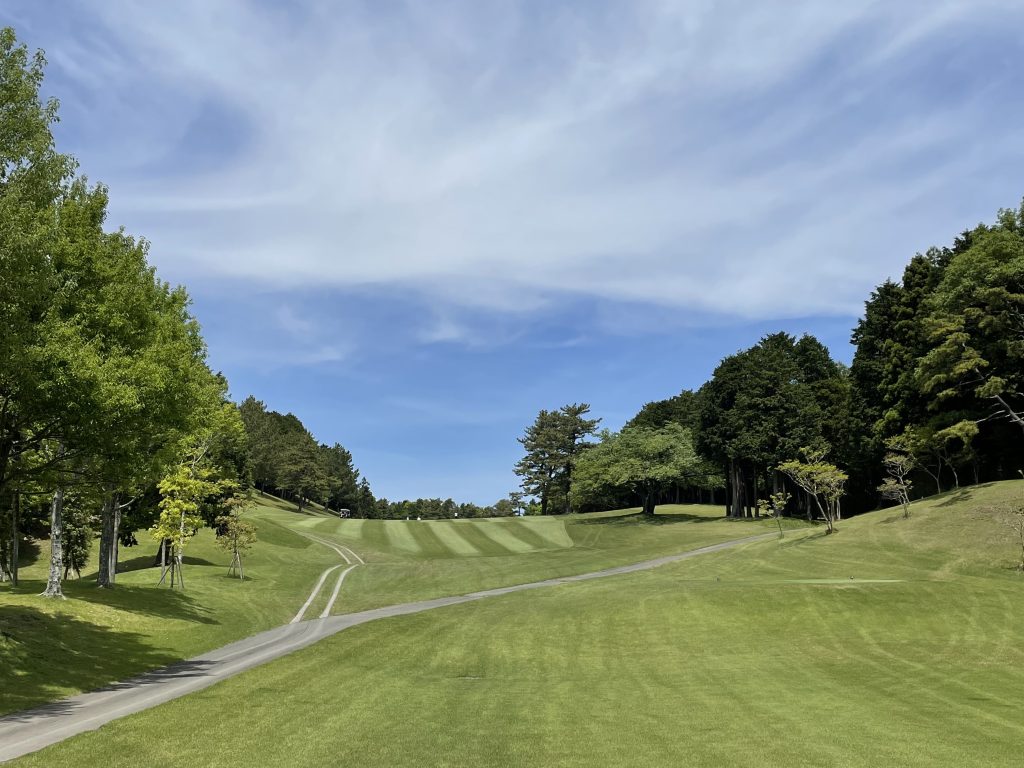
The 6th (411 yards, par 4) is a long downhill with a spacious fairway and a long distance. It is a hole where you want to earn distance by hitting a ball that flies far away on the tee shot.
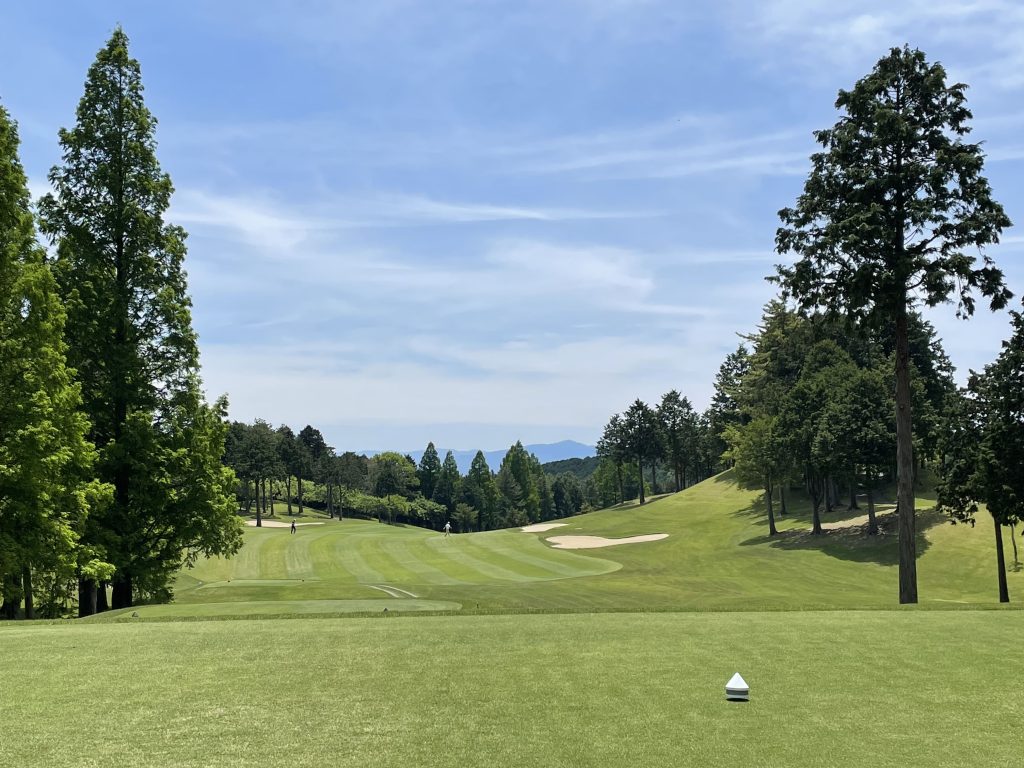
The 7th (315 yards, par 4), This time it is a middle hole with a short distance, but since it has a large dock wreck to the right, it is recommended that the tee shot aim at the fairway center more reliably than the distance. It is a beautiful hall with rows of cherry blossom trees on the left and right.
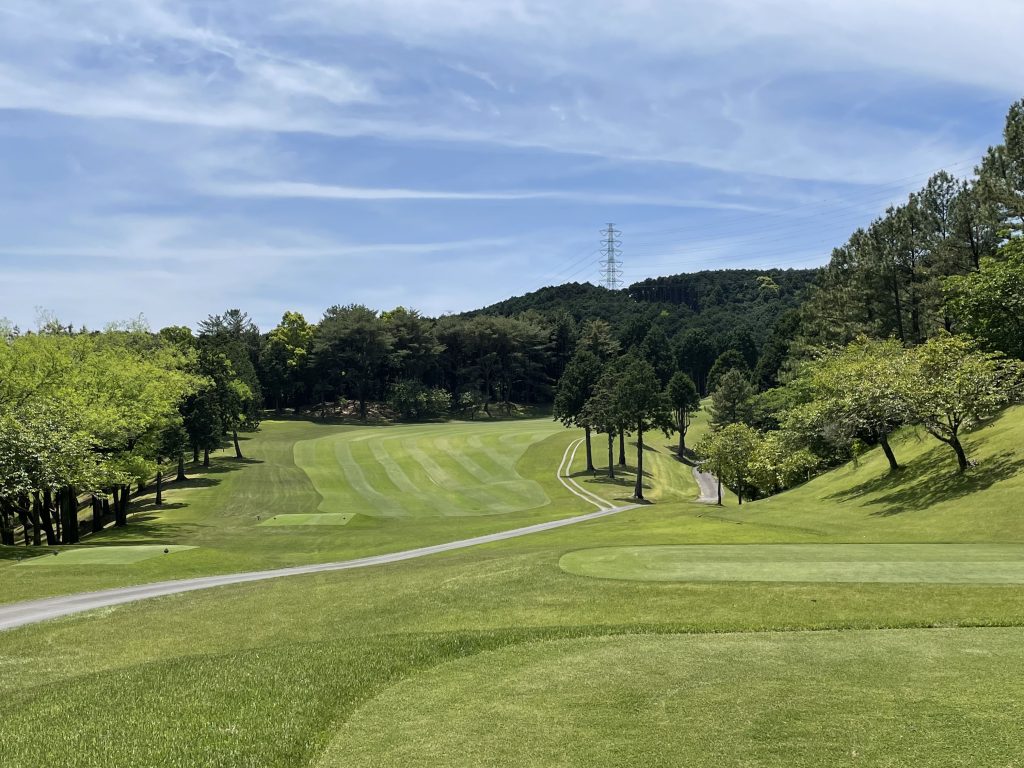
The 8th (430 yards, par 4) is a relatively long middle hole, and there is a deep valley in front of the tee ground, so the tee shot feels pressure. I think it’s the most difficult hole in the course.
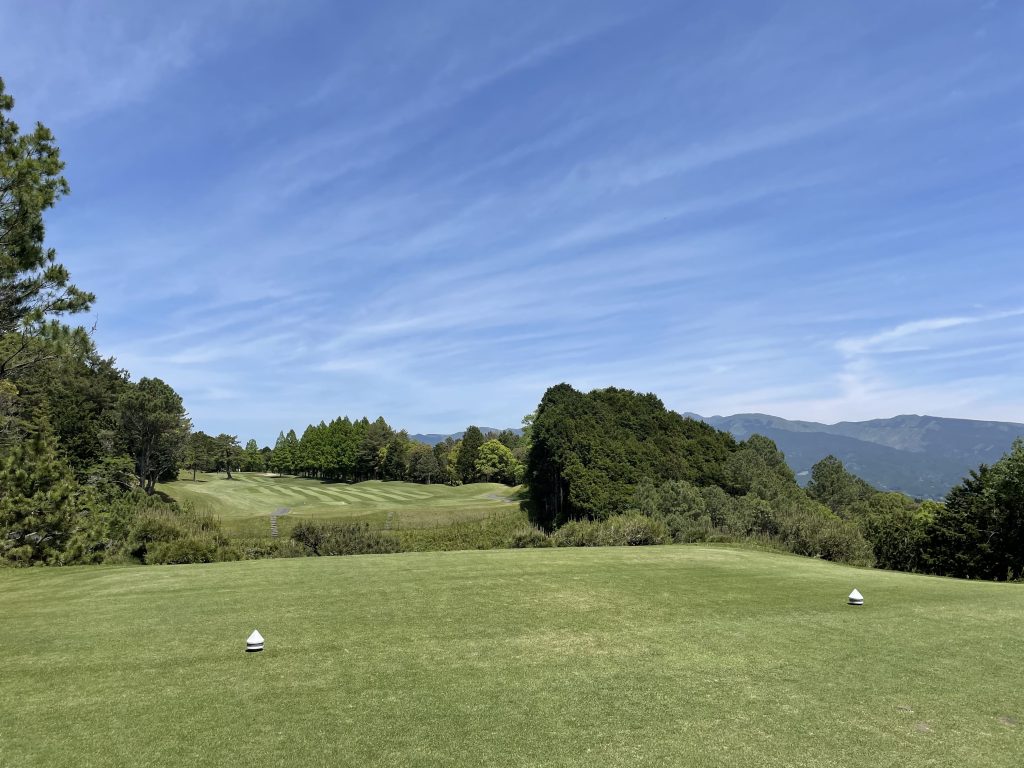
After the painful 8th, Mt. Fuji and the impressive short hole 9th (160 yards, par 3) with beautiful sand greens are waiting for you. With recent modifications, the tee ground has been expanded widely to the left and right, making Mt. Fuji even better visible. But, the distance is farther than it looks, and if you short it even a little, the ball will be caught in the pond, and the green is long sideways and seven bunkers guard the surroundings, so your tee shot needs to capture the green accurately. It is also a hole where you can feel that beautiful things have thorns.
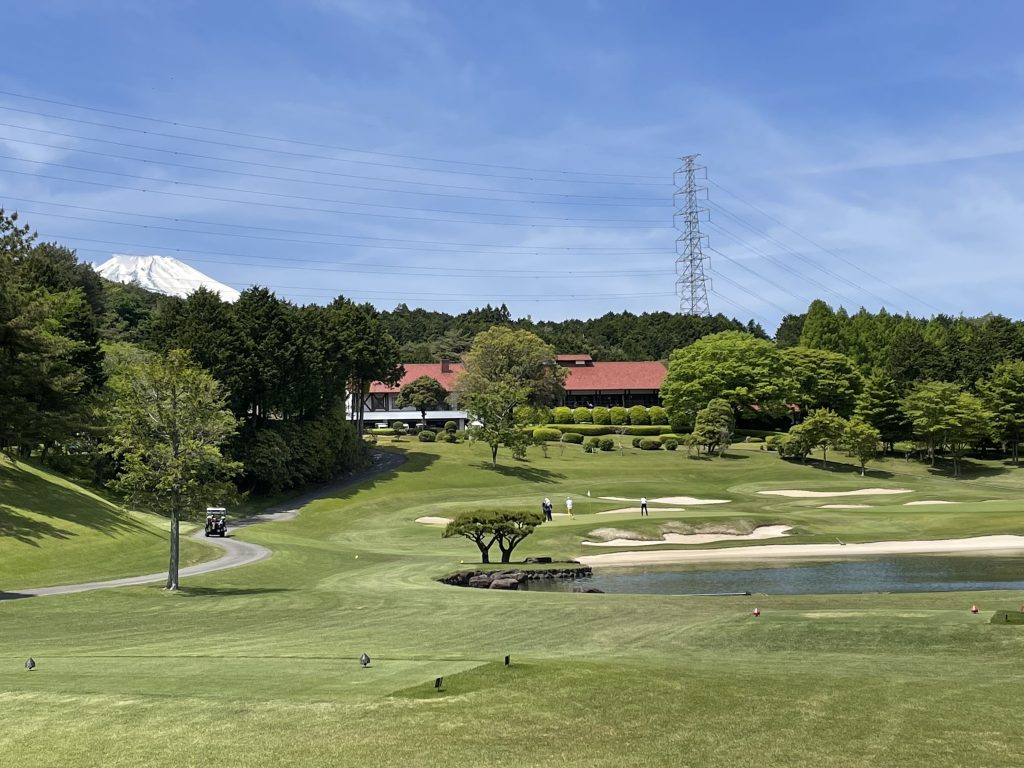
Perhaps you want to take a break after the first half, but since the number of players is limited, you can play through 18 holes. But don’t you take a break and look forward to lunch?
The lounge and restaurant in the clubhouse have a clean and calm atmosphere, and the food is delicious Western food reminiscent of a first-class hotel restaurant. When the season is good, it is recommended to eat while feeling the breeze from the comfort on the terrace seats with a good view.
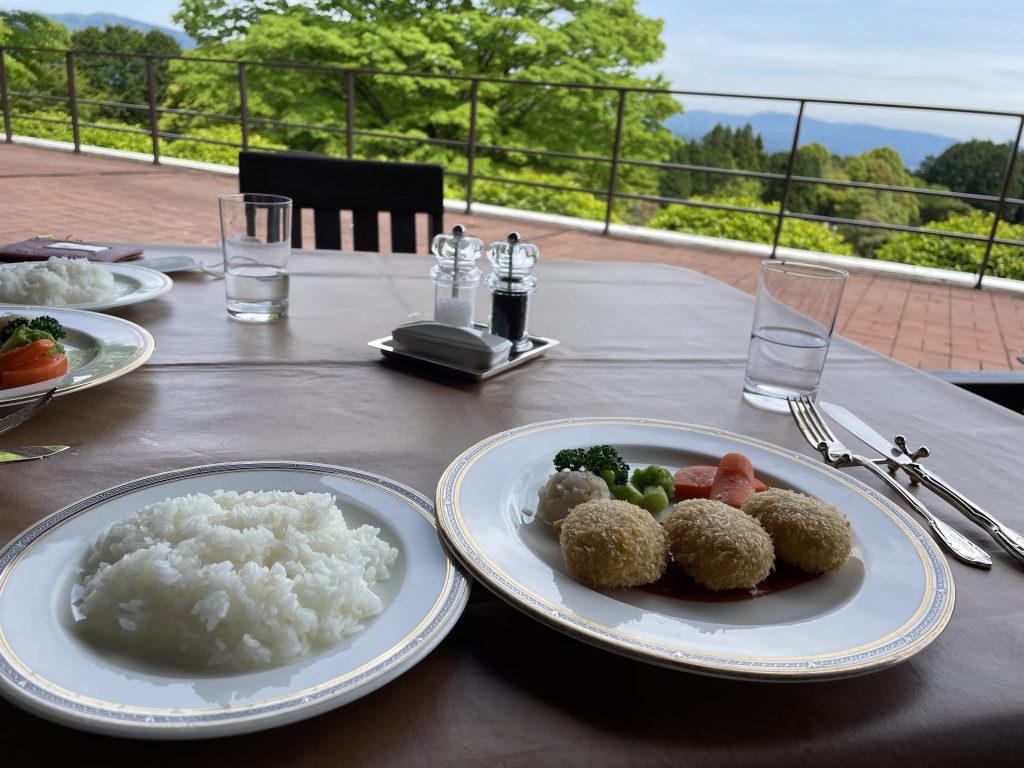
The second half of the 10th (428 yards, par 4) starts from a relatively long middle hole. With a gentle downhill and a wide fairway, you can swing the driver as much as you want. It is a little right dock wreck, but you need to be careful about the large bushes that extend from the slope on your right. Also, since the distance is long, there is still some distance left on the approach shot, but there is an OB right behind the green, so be sure to go from the front.
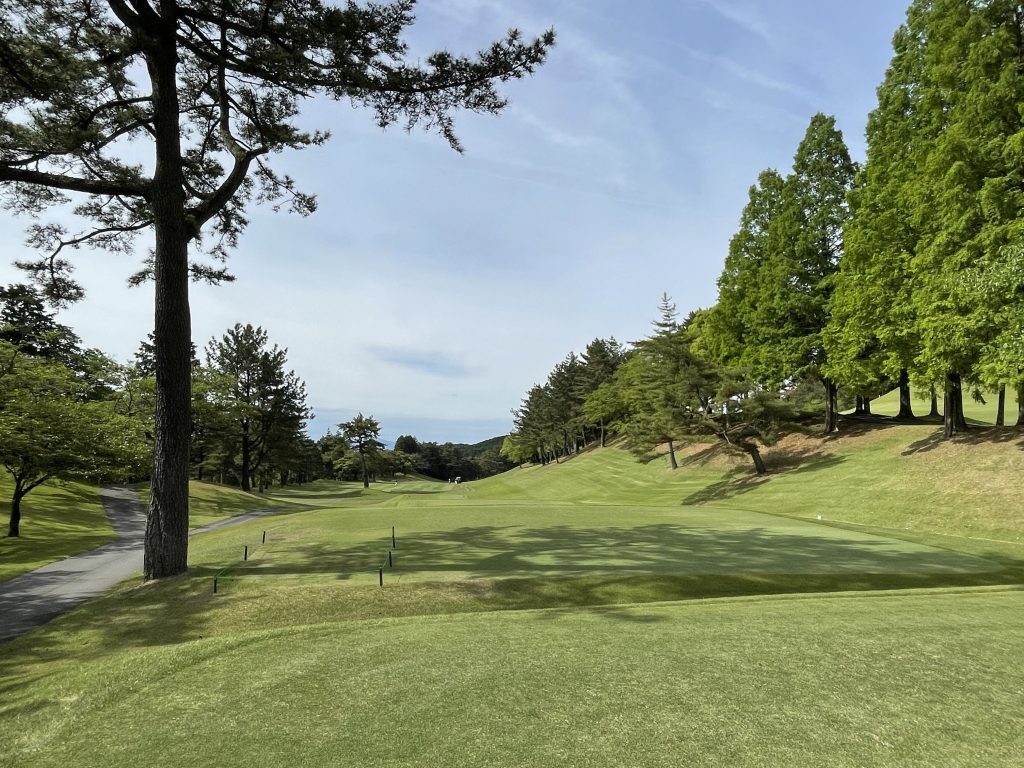
The 13th (390 yards, par 4) gently docks to the right and is a slightly uphill middle hole that feels like a long distance. When the weather is nice, Mt. Fuji looks a little ahead of the fairway.

The 14th (528 yards, par 5) is a long hole that goes down slowly, but after all, Mt. Fuji seen from this hole is the most beautiful! Mt. Fuji can be seen on the back side, so I want to look back and make a round with a relaxed feeling. It is also recommended to capture the scene with you and Mt. Fuji on the green.
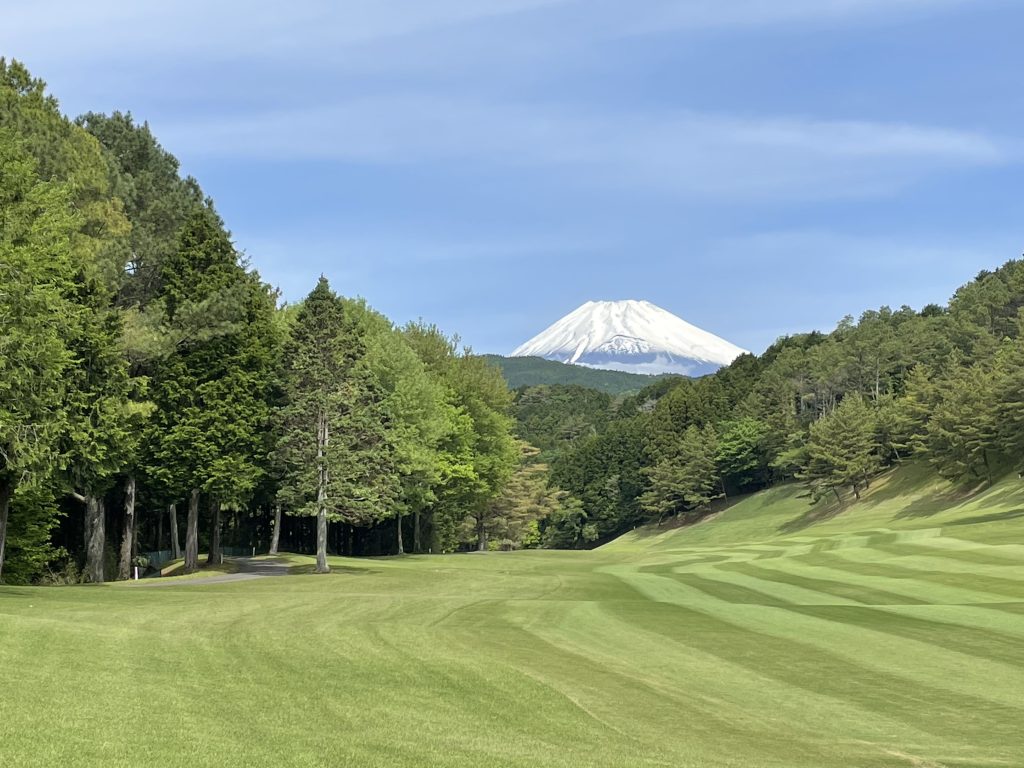
The 15th (356 yards, par 4) is a middle hole that is slightly uphill and docked to the right. This time you will hit a shot towards Mt. Fuji.

The 16th (186 yards, par 3) is a short hole with a pond on the fairway from the front right of the green. On the day using the B green on the right, you feel pressure, but unexpectedly there is a distance between the pond and the green. Looking back from the green to the tee ground, you can see the beautiful Mt. Fuji over the pond, which is an impressive short hole reminiscent of the famous 17th hole of the Taiheiyo Club Gotemba course.
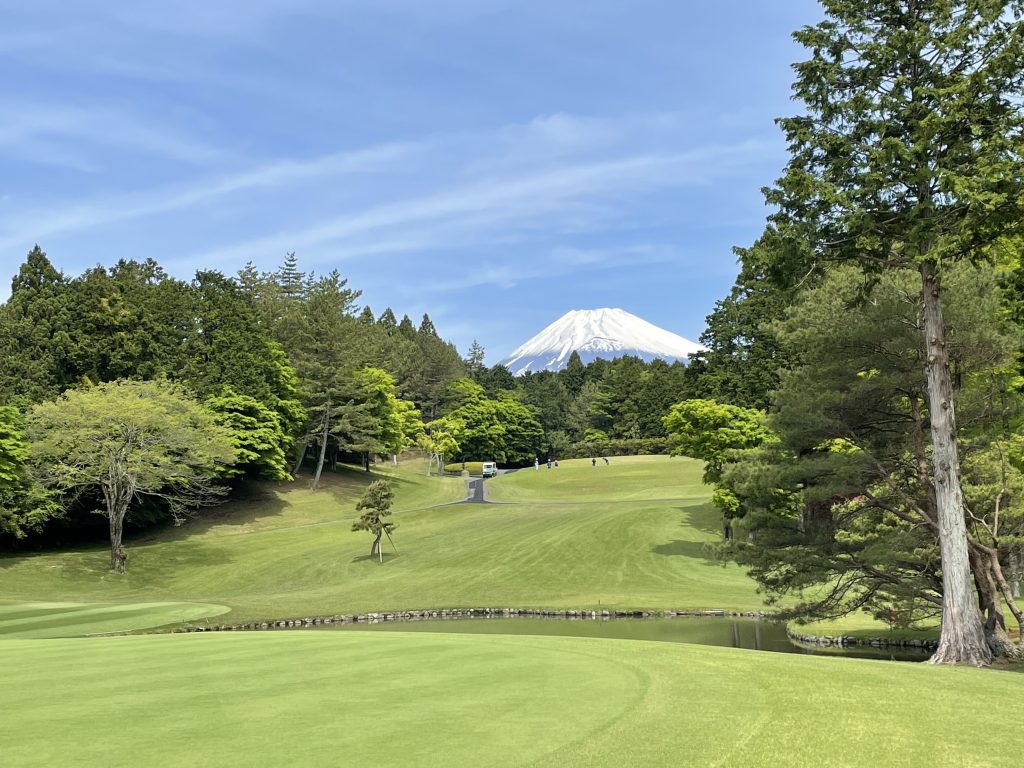
The 17th (532 yards, par 5) is a spacious downhill long hole where you can swing your driver as much as you want. From time to time you can see a family of deer living near the back of the green.

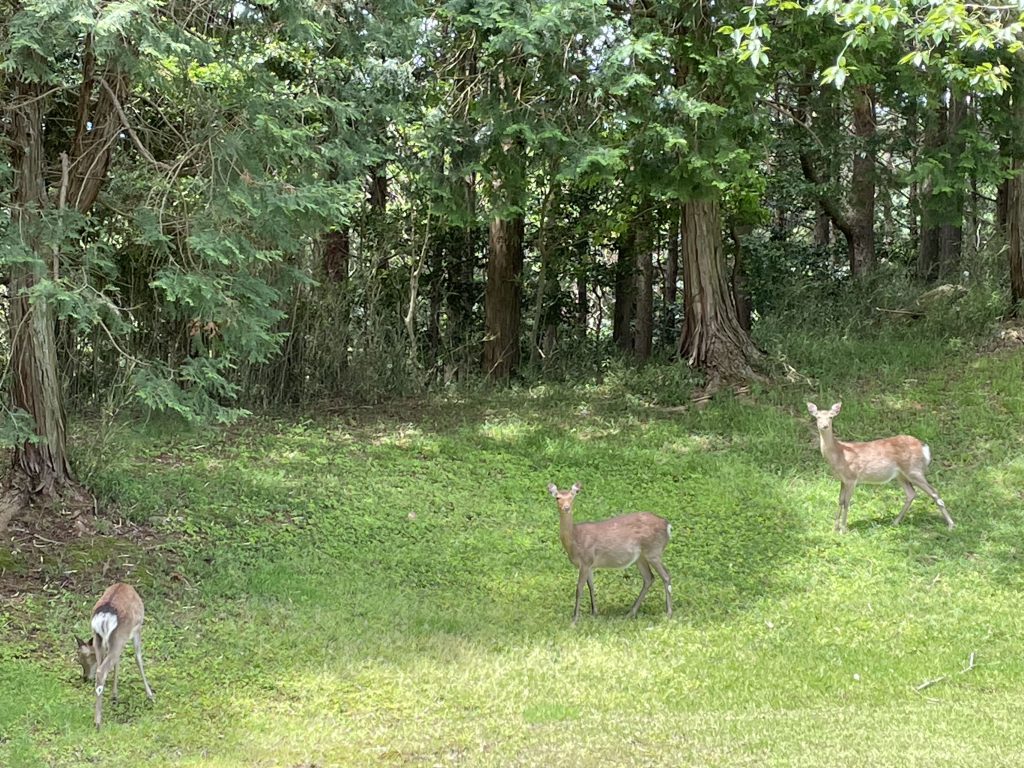
The 18th (348 yards, par 4) is a left dock wreck with a mountain protruding to the left of the tee ground, so you can’t see the green or clubhouse from the tee ground. On the slope of the mountain on the left side of the fairway, the 500-shaped planting letters, which is the name of the course, appear and impressing that this is the final hole.
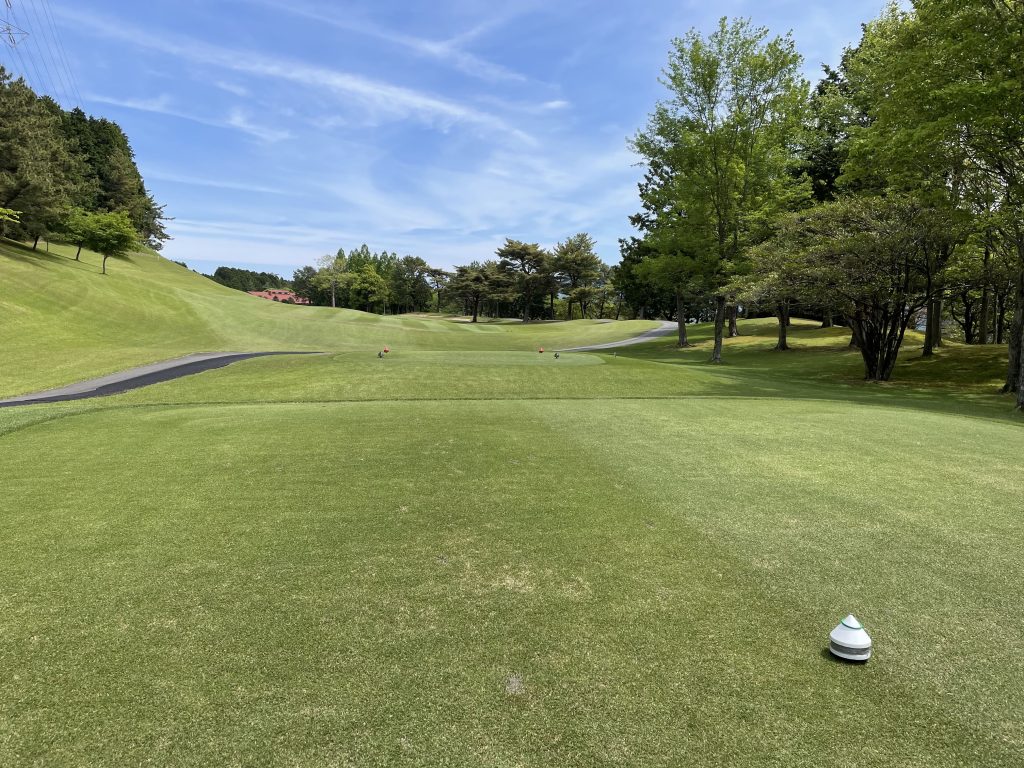
In this way, not only the beauty of the course including the scenery such as showing Mt. Fuji effectively, also it is a famous course where you can feel the dignity from the polite and sophisticated response of the employees, as well as the stately clubhouse where the thick wooden pillars are impressive while being simple.
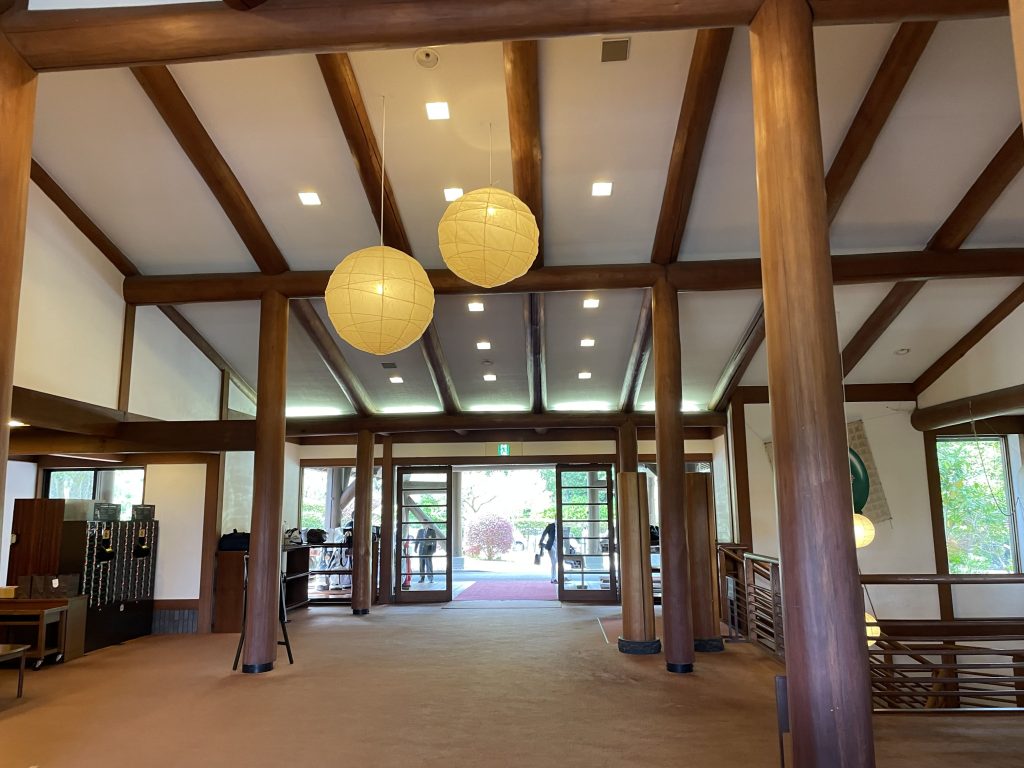
Since it is located on the southern slope of Mt. Fuji, it is relatively warm even in winter, and there are many days when you can play comfortably even in winter. (By the way, in the New Year, the tea mark is in the shape of Kadomatsu, which is the symbol of Japanese New Year.)
Five Hundred Club, where you can enjoy various views of Mt. Fuji throughout the year.
It is not so far from Tokyo about 1 hour and 40 minutes from Tokyo via the Susono IC on the Tomei Expressway, and about 2 hours from Tokyo via Mishima Station on the Shinkansen train. But it’s definitely worth a visit, so be sure to find an opportunity to play.
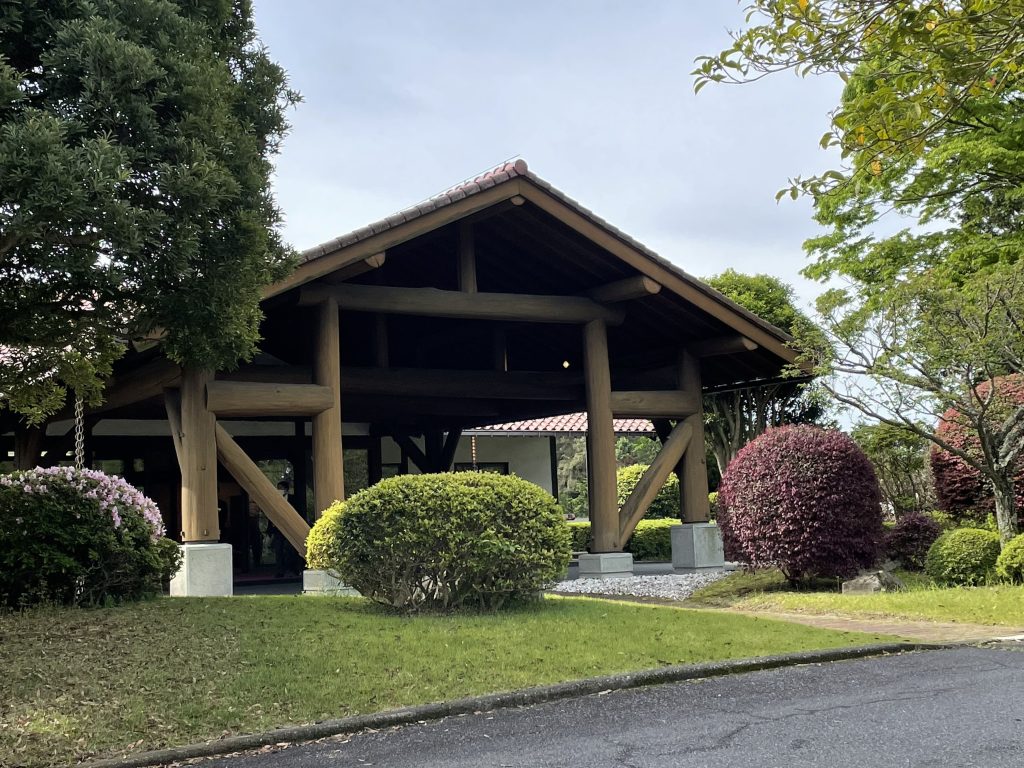
Five Hundred Club
Address 953-2, Senpuku, Susono, Shizuoka
TEL 055-993-0500
